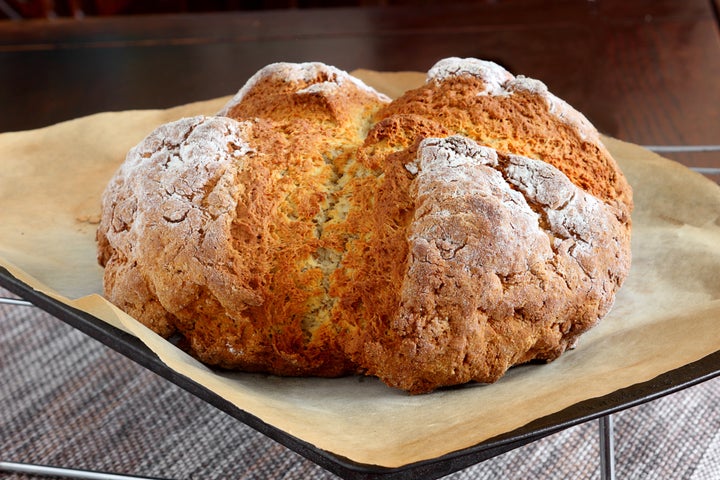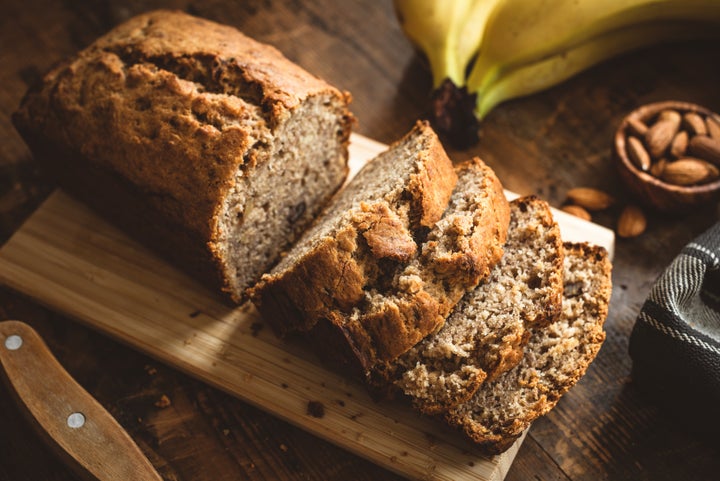You’ve probably noticed baking is a big deal right now during the coronavirus pandemic. People are stress baking and posting picture after picture of their fanciful creations. There’s only one problem: Many stores and online retailers are sold out of yeast.
Luckily, you don’t have to let that hold you back from your baking dreams. We talked to two expert bakers for the best tips and tricks for baking without yeast.
1. Make a simple sourdough starter
If you’ve been trying your hand at making sourdough bread and starter from scratch, you’re wise. Not only is sourdough bread delicious, but that sourdough starter is also a perfect homemade substitute for yeast, said Nanette Watson Caran, an artisan baker and farmer at Frio Farm in Concan, Texas.
Watson Caran told HuffPost, “To create a wild yeast starter from nature, my suggestion is simple: 1/2 cup water and 1/2 cup flour, put in a wide mouth quart-sized jar.” Watson said to be sure to use filtered or spring water since chlorinated water will kill the yeast. Next, she said, “mix well and cover with a cheesecloth or plastic wrap. About 24 hours later, feed the starter with another cup of flour and enough water to get the same consistency as before.” She said to look for bubbles, which will indicate the process is working. The starter will be ready to use as a yeast substitute when it floats on top of the water in the jar.
Every cup of starter is the equivalent of a packet of yeast. Read here for full instructions.
2. Combine baking soda and acid
If you don’t have yeast but you do have baking soda and an acid (buttermilk, lemon juice, vinegar, etc.), you can still fill your kitchen with the smell of homemade bread.
Chef Aaron Bedard of the Stephanie Inn in Cannon Beach, Oregon, explains, “Baking soda is activated by acid, so when these two ingredients are put together, it rises.”

This is a technique used in baked goods such as Irish soda bread, which traditionally uses baking soda and the acid from buttermilk for its leavening power instead of yeast. Bedard told HuffPost that adding lemon juice or vinegar to baking soda works, as well.
Start by mixing the baking soda and acid in equal parts, but Bedard said you may have to play around with the amounts to get the results you want.
This method can be substituted for yeast on a teaspoon-for-teaspoon basis.
3. Compromise: Keep it basic with baking powder or baking soda
There’s a reason everyone’s baking banana bread right now ― it doesn’t require yeast.
Bedard suggests simply sticking with the types of baked goods that typically don’t require yeast to begin with. “I would recommend leaning toward quick bread recipes, which use baking soda and baking powder for leavening instead of yeast. Examples would be biscuits, coffee cakes, muffins and scones.” If you’re wondering where to start, you can find Bedard’s delicious signature scone recipe here.

4. Cheat
There are many situations in which cheating is not a good idea, but any chef will tell you baking is not one of them. If you can’t find yeast packets online or on store shelves, you may be able to find them in some unexpected places. For instance, Bob’s Red Mill Gluten-Free Pizza Crust Mix comes with a packet of yeast and as of yet, is still widely available.
Another option is looking for a baking mix that contains leavening, like a pancake mix. “You can use a pancake mix to make things that rise,” Bedard said. “What you have to do is look at the consistency of the mix. If you add more mix and less liquid to the consistency of stiff mashed potatoes and add some cheese, you can hand form them into cheesy breadsticks. If you add more liquid to make them thinner, you can use the mix to make crepes, both sweet and savory.”
5. Be prepared to adapt
Baking without yeast is possible, and even fun, but it’s also important to know that substitutions are unlikely to yield the same texture as the real thing. Baking is notoriously different from kitchen to kitchen since it’s susceptible to variables like changes of altitude. Be prepared to experiment and adjust, which is half the fun of baking anyway. In the meantime, enjoy the fantastic aromas wafting out of your oven.
A HuffPost Guide To Coronavirus
